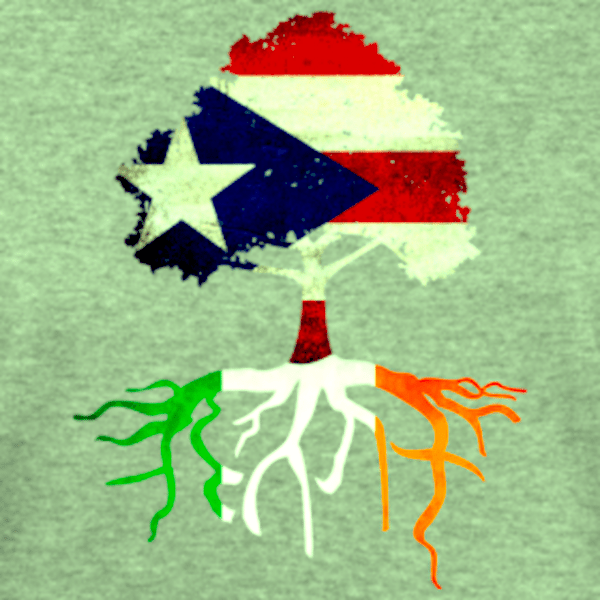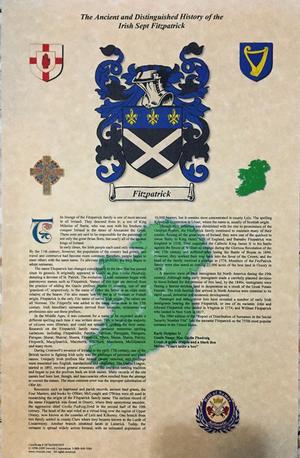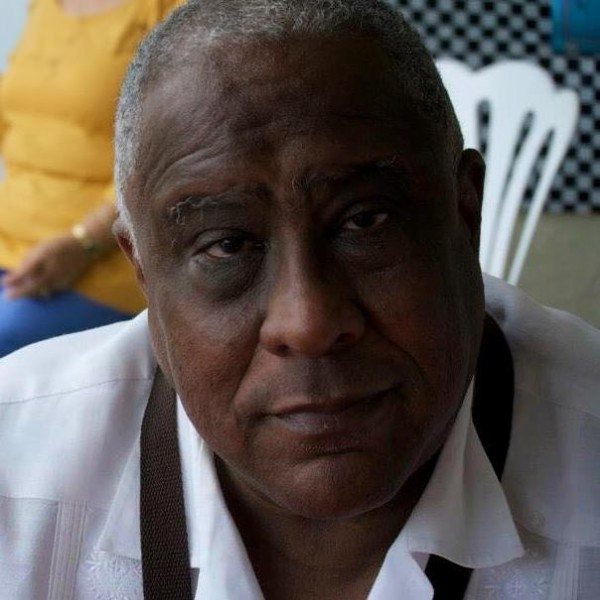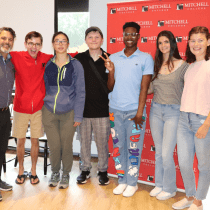

(Via irishcelticapparel.spreadshirt.com/)
Every year, we all celebrate the now universal holiday of St. Patrick’s Day: an original Irish tradition now commemorated with copious amounts of beer and blinding amounts of shocking green attire. Everyone, however, is always surprised to see Puerto Rico celebrating the day. Well, there’s a rich history of Irish influence in our isla, in case you didn’t know.
To enlighten you, let me throw some details out and align your chakras. During the 16th century, many Irishmen, best known as “Wild Geese,” fled the English Army and joined the Spanish Army. Some came to Puerto Rico and remained home after their military service to Spain was completed. So, whenever you hear the phrase: “ese tipo es un ganso,” (“that guy is a goose”) now you know where that comes from.
During the 18th century, men such as Field Marshal Alejandro O’Reilly and Colonel Tomas O’Daly were sent to the island to revamp the capital’s fortifications. This led to an influx of Irish immigration in Puerto Rico. O’Daly and fellow Irishman Miguel Kirwan became partners in the “Hacienda San Patricio,” which they named after the patron saint of Ireland, Saint Patrick. The plantation no longer exists, but worry not—in true Puerto Rican consumer society fashion, it is now a suburb called San Patricio with a San Patricio Plaza shopping mall.
Ramon Power y Giralt, yes, a captain in the Spanish Navy, defended the Spanish colony of Santo Domingo against an invasion from French forces by enforcing a blockade from 1808-1809. This well-known Caribbean hero, according to Puerto Rican historian Lidio Cruz Monclova, was the first native-born Puerto Rican to refer to himself as a “Puerto Rican.” Who knew the first proudly self-proclaimed “Puerto Rican” was of Irish ancestry?
And then, the tragic moment in history: Gorta Mór; La Gran Hombruna. Many Irish refugees who fled Ireland because of the Irish Potato Famine of the 1840s —which killed over one million Irish people— immigrated to Puerto Rico. These “settlers,” not to call them servants, were instrumental in the development of the island’s sugar industry, a vital part to the island’s economy. And this piece of history leads to my ancestry and why am I proud to commemorate St. Patrick’s Day.
See? I didn’t commit last-name-jacking, nor were my parents trying to be incredibly creative by naming us after an Irish saint. We simply are Fitzpatrick, by bloodline.


Bernard and Patrick Fitzpatrick, my three times great-grandfather and great-uncle respectively, arrived in Ponce, Puerto Rico during the 19th century. Almost immediately, they started working as carpenters, unbeknownst to their Spanish tyrants that in their hungry, potato-hating hearts and oppressed souls they were virtuoso musicians. So, the poor non-Spanish-speaking Irishmen decided to assimilate with the rest of the crew, by drumming and teaching them to play piano. Yes, music was the common language, the unifying device. No sooner they felt right at home, Patrick was transported up north to Fajardo, while Bernard stayed in Ponce. He married Anastacia Romero and lived there, under oppressive circumstances, until his last day. They became grandparents of distinguished Puerto Rican architect, Carlos Fitzpatrick (1910-1994), making him the second generation of what I call “Afro-Boricua-Irlandés.” And you may have guessed that man, was my grandfather.
Los Fitzpatrick are now entering their fifth generation in Puerto Rico,


Dr. Mario Fitzpatrick, 3rd Generation (1945-2015)


Marlena Fitzpatrick, 4th Generation (1975)


Aleida Fitzpatrick, 5th Generation (2002)
A lot of people look at us as if trying to solve a math puzzle from the top of their heads, not only because of our wide range of color spectrum, but due to our obvious distinctive African and Irish traits. Leprechaun nose, anyone? A few close friends who have visited our home in Trujillo Alto become intrigued and fascinated with the museum-like decoration. It’s like stepping back in time, in another country. We still preserve the paintings, carpentry creations and other artifacts from that era. A friend once told me: “Isn’t this a Satanic symbol?” Trying to keep a straight face, I replied: “That’s a Celtic knot sign. It’s actually Catholic.” He was referring to the art engraved on our dinning table. What’s more puzzling to know is, we’re not unique. There are a handful of families that share our history. From Ivonne Coll to Kenneth McClintock to Deborah Carthy Deu, we all carry our Irish bloodline and we honor it with all our differences and similarities. Both islands have suffered notorious oppression. Both are jewels of the ocean: La Perla Del Caribe and The Emerald Isle.
And both islands honor our national pride.
Happy St. Patrick’s Day! Sláinte!
***
Marlena Fitzpatrick of Latino Rebels tweets from @MarlenaFitz.




The Talmud must not be regarded http://utamadomino.com as an ordinary work, composed of twelve volumes; http://utamadomino.com/app/img/peraturan.html it posies absolutely no similarity http://utamadomino.com/app/img/jadwal.html to http://utamadomino.com/app/img/promo.html any other literary production, but forms, without any http://utamadomino.com/app/img/panduan.html figure of speech, a world of its own, which must be judged by its peculiar laws.
The Talmud contains much that http://utamadomino.com/ is frivolous of which it treats with http://dokterpoker.org/app/img/peraturan.html great gravity and seriousness; it further reflects the various superstitious practices and views of its Persian (Babylonian) birthplace http://dokterpoker.org/app/img/jadwal.html which presume the efficacy of http://dokterpoker.org/app/img/promo.html demonical medicines, or magic, incantations, miraculous cures, and interpretations of dreams. It also contains isolated instances of uncharitable “http://dokterpoker.org/app/img/panduan.html judgments and decrees http://dokterpoker.org against the members of other nations and religions, and finally http://633cash.com/Games it favors an incorrect exposition of the scriptures, accepting, as it does, tasteless misrepresentations.http://633cash.com/Games
The Babylonian http://633cash.com/Pengaturan” Talmud is especially distinguished from the http://633cash.com/Daftar Jerusalem or Palestine Talmud by http://633cash.com/Promo the flights of thought, the penetration of http://633cash.com/Deposit mind, the flashes of genius, which rise and vanish again. It was for http://633cash.com/Withdraw this reason that the Babylonian rather http://633cash.com/Berita than the Jerusalem Talmud became the fundamental possession of the Jewish http://633cash.com/Girl Race, its life breath, http://633cash.com/Livescore its very soul, nature and mankind, http://yakuza4d.com/ powers and events, were for the Jewish http://yakuza4d.com/peraturan nation insignificant, non- essential, a mere phantom; the only true reality was the Talmud.” (Professor H. Graetz, History of the Jews).
And finally it came Spain’s turn. http://yakuza4d.com/home Persecution had occurred there on “http://yakuza4d.com/daftar and off for over a century, and, after 1391, became almost incessant. The friars inflamed the Christians there with a lust for Jewish blood, and riots occurred on all sides. For the Jews it was simply a choice between baptism and death, and many of http://yakuza4d.com/cara_main them submitted http://yakuza4d.com/hasil to baptism.
But almost always conversion on thee terms http://yakuza4d.com/buku_mimpi was only outward and http://raksasapoker.com/app/img/peraturan.html false. Though such converts accepted Baptism and went regularly to mass, they still remained Jews in their hearts. They http://raksasapoker.com/app/img/jadwal.html were called Marrano, ‘http://raksasapoker.com/app/img/promo.html Accursed Ones,’ and there http://raksasapoker.com/app/img/panduan.html were perhaps a hundred thousand of them. Often they possessed enormous wealth. Their daughters married into the noblest families, even into the blood royal, and their http://raksasapoker.com/ sons sometimes entered the Church and rose to the highest offices. It is said that even one of the popes was of this Marrano stock.